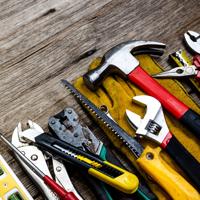Welcome to the world of furniture building! Whether you're a seasoned DIY enthusiast or just starting out, creating custom furniture can be a rewarding endeavor. At DIY Home Tips, we believe in the joy of crafting with your own hands. Let's explore how you can begin your journey into building beautiful and functional furniture pieces.
Getting Started
The first step is to understand your project's scope. Ask yourself: What kind of DIY Projects are you undertaking?
- What type of furniture do you want to build?
- What space will it occupy?
- What materials and tools will you need?
Start with a simple project, like a bookshelf or a coffee table. These don't require complex joints or intricate designs, making them great starter pieces for beginners.
Selecting Your Materials
Choosing the right materials is crucial. It impacts not just the appearance but also the durability and functionality of your furniture. Here are some options to consider:
- Wood: Pine, oak, and maple are popular choices due to their workability and availability. Pine is softer and easier to work with, making it ideal for beginners.
- Plywood: This is versatile and economical. It's often used for the main body of a piece, covered by a veneer for a polished look.
- Metal: If you're aiming for an industrial look, metal accents can add character. Steel pipes make sturdy and eye-catching table legs.
Essential Tools for Furniture Making
Having the right tools can make or break your furniture-building experience. You don’t need a full workshop to start. Here are some essentials:
- Measuring Tape: Precision is key, so measuring accurately will save you headaches down the line.
- Saw: A circular saw or hand saw will suffice for beginners.
- Drill: Cordless drills with multiple bits are ideal for making holes and driving screws. You can find more information on essential tools like these in our Essential Tools section.
- Sanding Tools: Sandpaper or a power sander to smooth out surfaces and edges.
- Clamps: These hold pieces in place while you work on them.
Planning and Design
Before you start cutting and nailing, sketch your design. You don't need to be a professional draftsman, but having a visual guide helps maintain focus. Keep these tips in mind:
- Dimensions: Consider how much space the piece will occupy and its purpose.
- Functionality: How will it be used? Make sure your design includes practical elements like shelves or drawers if needed.
- Style: Match the design to your home decor theme, whether modern, rustic, or eclectic.
Step-by-Step Example: Building a Rustic Coffee Table
Here's a simple project to get you started: a rustic coffee table. You might find inspiration for similar projects in our Pallet Projects section.
What You'll Need
- Four 2x4 wooden planks for the tabletop.
- Two smaller planks for the base and support.
- Wood screws and a drill.
- Sandpaper or a power sander.
- Stain or paint for finishing.
Instructions
Cut the Wood: Cut the 2x4 planks to your desired length for the table top. Then cut the base planks to match the width.
Assemble the Tabletop: Lay the planks side by side. Join them using underside support planks, securing them with screws.
Create Legs: Use remaining wood or metal if preferred. Attach the legs securely to each corner of the base planks.
Sand and Finish: Sand all surfaces until smooth. Wipe away dust with a cloth. Finish with a stain or paint to protect the wood and enhance its appearance.
Final Thoughts
Furniture building can be a delightful hobby if approached with patience and creativity. Start simple, and gradually increase the complexity of your projects as your confidence grows. Remember, building furniture is as much about the journey as the finished product.
If you're interested in exploring more DIY projects, come back and visit DIY Home Tips for more ideas and inspirations. Feel free to share your furniture-building experiences with us; we'd love to see how your creativity unfolds.
Happy building!




